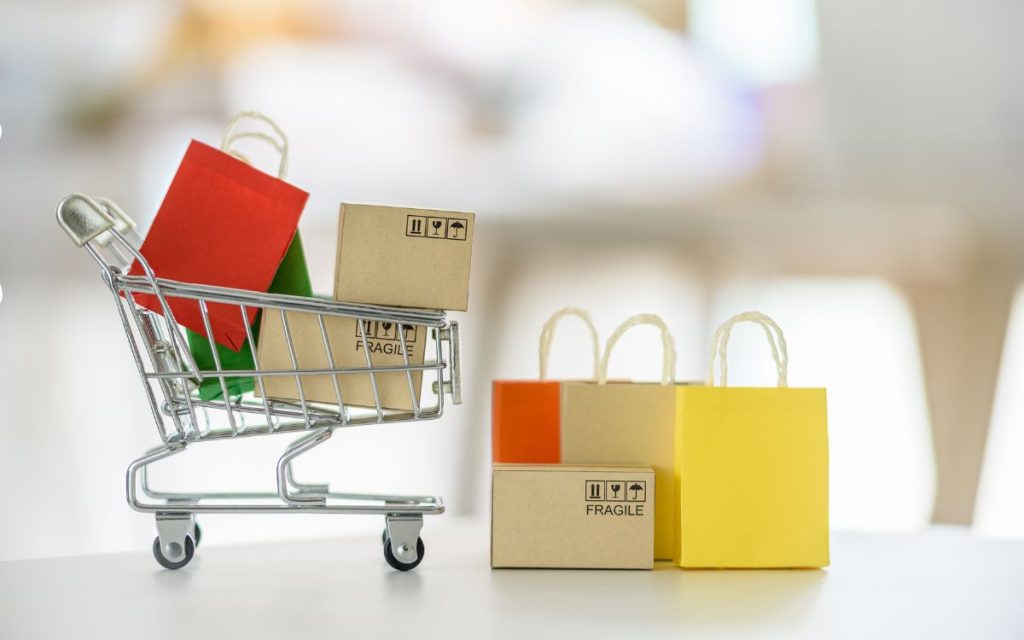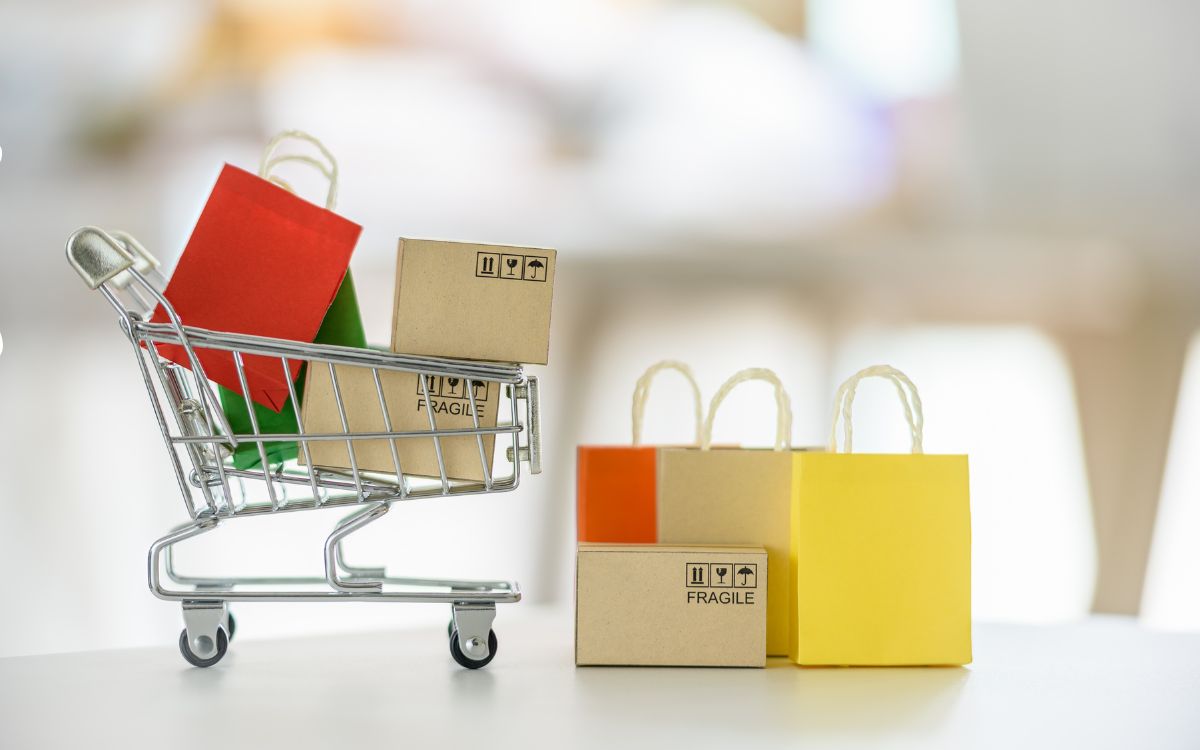Table of Contents
Managing overhead costs is one of the primary challenges for e-commerce businesses, especially as they grow and order volumes increase. While in-house fulfillment may work for smaller operations, this approach often becomes unsustainable as a business scales. The need for more storage space, packing materials, labor, and shipping resources can quickly drive up expenses and make in-house fulfillment a costly burden.
This is where third-party fulfillment centers (3PLs) come in. By outsourcing fulfillment to a 3PL provider, e-commerce businesses can streamline operations, lower costs, and improve efficiency, all while creating a better experience for customers. Here’s a detailed look at how partnering with a third-party fulfillment center can significantly reduce overhead for your e-commerce shop.

1. Reduced Storage and Warehousing Costs
One of the major expenses for e-commerce businesses is storage. As your inventory grows, so does the need for physical space, which often involves leasing warehouse space or maintaining storage facilities. With fluctuating demand, however, renting or purchasing warehouse space often leads to either underused or overcrowded storage.
Third-party fulfillment centers offer scalable storage solutions that allow businesses to use space on an as-needed basis. Many 3PLs charge based on the amount of inventory held and the duration it’s stored, which means you’re only paying for the space you actually use. This flexibility reduces the risk of paying for unused space or scrambling to find extra storage during high-demand seasons. By partnering with a 3PL provider, e-commerce businesses can avoid the long-term leasing contracts and maintenance costs that come with owning or renting warehouse facilities, ultimately lowering their overall storage overhead.
2. Lower Shipping Costs through Bulk Discounts
Shipping can be one of the most significant costs for an e-commerce shop, particularly when dealing with high order volumes or large, bulky products. Negotiating favorable shipping rates can be difficult for small to medium-sized businesses due to their limited volume.
Third-party fulfillment centers, however, often have established relationships with major shipping carriers and can secure bulk discounts that are difficult for individual businesses to obtain. By leveraging these discounts, fulfillment centers can reduce the shipping coststhat e-commerce brands incur. Many 3PLs pass these savings directly to their clients, allowing them to offer competitive shipping rates to customers. Additionally, since 3PLs often operate multiple warehouses across different regions, they can store products closer to major customer bases, reducing shipping times and costs even further.
3. Reduced Labor Costs and Operational Efficiency
Hiring, training, and managing a fulfillment team comes with significant overhead costs. As order volumes increase, businesses may need to bring on additional staff to keep up with demand. This includes packers, warehouse managers, and inventory coordinators—all of whom add to payroll expenses.
By outsourcing fulfillment to a 3PL, businesses eliminate the need for dedicated in-house fulfillment staff, leading to significant payroll savings. Third-party fulfillment centers are staffed with logistics professionals trained to manage every aspect of fulfillment, from receiving and storing inventory to packing and shipping orders. With the fulfillment process in the hands of experienced professionals, e-commerce businesses can reduce errors, speed up order processing, and ensure consistent, high-quality service, all without the burden of expanding an in-house team. This efficiency translates into lower labor costs and better resource allocation, allowing businesses to focus on other areas that drive growth.
4. Elimination of Packing Supply Costs
Packing materials—boxes, tape, bubble wrap, and other supplies—are often overlooked as a contributor to overhead costs, but these expenses add up quickly for businesses managing their own fulfillment. Buying packing supplies in bulk can reduce costs somewhat, but it also requires significant upfront investment and storage space.
Third-party fulfillment centers buy packing materials in large quantities at wholesale rates, which reduces costs compared to what individual businesses might pay. Many 3PLs include packing materials in their service fees, meaning e-commerce businesses don’t need to worry about sourcing, storing, or maintaining an inventory of packing supplies. This cost-saving benefit allows businesses to allocate funds elsewhere and simplifies the fulfillment process.
5. Improved Cash Flow through Pay-as-You-Go Pricing Models
Owning and operating an in-house fulfillment center often involves fixed costs that don’t fluctuate with order volume. Rent, utilities, and payroll are often stable expenses regardless of whether business is booming or slow.
Many 3PL providers, however, offer flexible, pay-as-you-go pricing models that allow businesses to scale costs up or down according to their order volume. This adaptability is especially beneficial during seasonal peaks or promotional events, where demand spikes can require more resources. By only paying for the services they need when they need them, e-commerce brands can improve cash flow and reduce financial strain during slower periods.
6. Reduced Investment in Technology and Systems
An efficient fulfillment operation relies on specialized technology, from inventory management systems to shipping and tracking software. Implementing these systems in-house requires both significant financial investment and ongoing maintenance costs, not to mention the need for regular updates and potential troubleshooting.
Third-party fulfillment centers are equipped with advanced logistics technology and typically offer software integration with major e-commerce platforms. These systems provide real-time visibility into inventory levels, order status, and shipment tracking, giving businesses access to the latest technology without the need for a substantial upfront investment. This arrangement allows e-commerce brands to benefit from sophisticated logistics systems that improve order accuracy and customer satisfaction, without bearing the overhead of purchasing, implementing, and maintaining these systems themselves.
7. Savings on Returns Management
Managing product returns can be a complex and costly process for e-commerce businesses, involving labor, storage space, and administrative time. Returns are often high in online retail, and dealing with them can create an operational bottleneck if handled in-house.
Many 3PL providers offer comprehensive returns management as part of their service package. This means they handle the return process, including receiving returned items, inspecting them, restocking if necessary, and managing customer refunds. With the fulfillment center taking care of returns, e-commerce businesses save on both labor and storage costs associated with handling returns, making it a cost-effective solution for managing reverse logistics. This streamlined returns process also helps improve customer experience, as customers receive faster, more organized return handling.
8. Enhanced Scalability Reduces Risk of Over- or Under-Investing in Resources
One of the main challenges of in-house fulfillment is anticipating future resource needs. Rapidly growing e-commerce businesses may find themselves over-investing in warehouse space, labor, and materials during slow periods or struggling to keep up with demand during peak seasons.
Third-party fulfillment centers offer a level of flexibility that allows e-commerce shops to adjust their resources according to demand. This scalability reduces the risk of costly investments that may not be needed long-term. For instance, a business experiencing a seasonal sales surge can rely on the 3PL’s infrastructure to handle the increased volume without committing to long-term expenses. This flexibility in resource allocation means that businesses are always operating at optimal levels without the financial burden of over- or under-committing to resources.

9. Improved Customer Satisfaction Leads to Cost Savings
A well-run fulfillment process is essential to creating a positive customer experience, as it directly impacts delivery speed, accuracy, and packaging quality. Mistakes in these areas can lead to returns, complaints, and a damaged reputation, all of which can become costly over time.
By partnering with a reliable 3PL provider, e-commerce businesses can reduce errors, minimize delays, and improve overall customer satisfaction. Happier customers lead to more repeat business and fewer returns or customer service issues, which in turn reduces the time and resources needed to address these problems. A 3PL partner’s professional, consistent fulfillment service ensures that customers receive their orders on time and in excellent condition, driving loyalty and reducing the costs associated with customer churn and reputational damage.
Lowering Overhead for Your E-Commerce Shop
Third-party fulfillment centers offer a powerful solution for e-commerce businesses seeking to reduce overhead and increase profitability. From storage and shipping savings to labor and technology costs, 3PL providers offer comprehensive services that streamline fulfillment and drive down expenses across the board. By partnering with a 3PL, e-commerce brands can reallocate resources toward growth-focused initiatives like marketing, product development, and customer acquisition, without the logistical burdens of in-house fulfillment.
In today’s competitive market, efficient and cost-effective fulfillment is a key driver of success. For e-commerce shops looking to scale sustainably, a 3PL partnership provides the flexibility, expertise, and cost savings necessary to compete effectively while keeping overhead low. Through strategic outsourcing, e-commerce businesses can optimize their operations, improve customer satisfaction, and ultimately position themselves for long-term growth and profitability.
